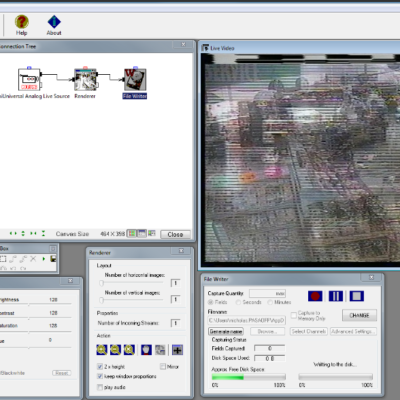Video forensic analysis plays a crucial role in modern investigations, helping professionals uncover critical details from video evidence. Whether used in law enforcement, legal cases, or security, forensic video software enables experts to enhance, analyze, and authenticate video footage. This guide will explore the fundamentals of video analysis, key techniques, and the tools used in forensic investigations.
What is Video Forensic Analysis?
Understanding the Basics
Video forensic analysis refers to the scientific examination of video recordings to determine their authenticity, enhance clarity, and extract valuable information. This process is widely used in criminal investigations, accident reconstructions, and legal proceedings to establish facts with precision.
Importance of Video Analysis in Investigations
- Authentication – Determines whether the video has been altered or manipulated.
- Enhancement – Improves video quality to reveal hidden details.
- Object Identification – Analyzes objects, faces, and license plates.
- Motion Tracking – Tracks movements within a video for investigation purposes.
How Forensic Video Software Enhances Investigations
Key Features of Forensic Video Software
Forensic video software provides various tools that assist in detailed analysis and enhancement. Some of the most essential features include:
- Frame-by-Frame Analysis – Allows investigators to examine individual frames for subtle details.
- Noise Reduction – Reduces grainy or pixelated footage for better visibility.
- Color Correction – Adjusts brightness, contrast, and saturation to enhance clarity.
- Video Stabilization – Reduces camera shakes to make objects and people more identifiable.
- Super-Resolution Techniques – Enhances resolution using AI-powered algorithms.
Common Applications of Forensic Video Analysis
- Law Enforcement – Used in criminal investigations to analyze security footage.
- Insurance Claims – Helps determine fraudulent claims through accident video review.
- Legal Proceedings – Provides crucial evidence for court cases.
- Private Security – Enhances CCTV footage for better surveillance.
Best Practices for Conducting a Video Analysis
Steps to Perform a Video Forensic Examination
- Acquire the Original Video – Always work with the raw, uncompressed file to prevent data loss.
- Verify Video Integrity – Use forensic tools to check for signs of tampering or edits.
- Enhance the Footage – Apply noise reduction, sharpening, and other enhancement techniques.
- Analyze the Content – Identify key elements such as timestamps, people, and objects.
- Document the Findings – Maintain a detailed report of the analysis process and results.
Avoiding Common Mistakes in Video Analysis
- Using Low-Quality Files – Always use the highest quality source available.
- Over-Processing – Excessive enhancements can distort original details.
- Ignoring Metadata – Metadata contains vital information about the video’s origin and authenticity.
Conclusion
Video forensic analysis is an indispensable tool for professionals dealing with video evidence. By using forensic video software, experts can authenticate, enhance, and analyze footage to support investigations effectively. Mastering the techniques and best practices outlined in this guide will ensure accurate and reliable results in forensic video examinations.
FAQs
1. What is the purpose of forensic video analysis?
Forensic video analysis is used to examine video evidence for authentication, enhancement, and identification purposes in legal, security, and investigative applications.
2. How does forensic video software improve video quality?
Forensic video software applies noise reduction, sharpening, color correction, and frame analysis to enhance video clarity and detail.
3. Can forensic video analysis detect video tampering?
Yes, forensic tools analyze metadata, frame sequences, and compression artifacts to determine if a video has been altered.
4. What types of cases benefit from forensic video analysis?
It is used in criminal investigations, accident reconstructions, fraud detection, and security surveillance reviews.
5. What is the best format for forensic video analysis?
The best formats are uncompressed or lossless formats such as AVI, RAW, or high-quality MP4 to preserve video integrity.




